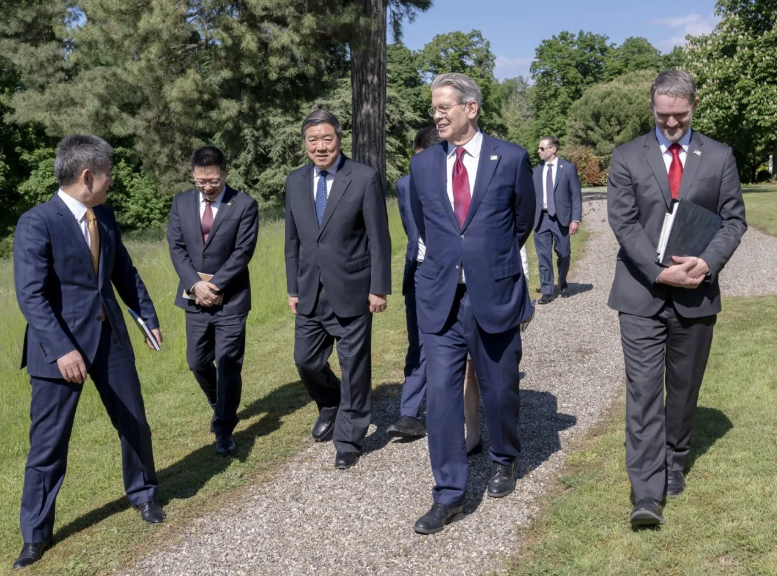
 US Treasury Secretary Scott Bessent with Trade Representative Jamieson Greer and Chinese Vice Premier He Lifeng with Vice Commerce Minister Li Chenggang, among other officials in Geneva, Switzerland/WHITE HOUSE
US Treasury Secretary Scott Bessent with Trade Representative Jamieson Greer and Chinese Vice Premier He Lifeng with Vice Commerce Minister Li Chenggang, among other officials in Geneva, Switzerland/WHITE HOUSEAfter weeks of back and forth, and raising tariff against one another, the United States and China finally agreed to have talks over trade between the two countries.
The decision to negotiate followed an increase in tariffs that saw both countries hit each other with new US tariffs on Chinese imports standing at 145 per cent while some US exports to China faced duties of 125 per cent.
The war started by President Donald Trump with the aim of protecting US businesses first saw China seek the intervention of the World Trade Organisation (WTO) before resorting to imposing tariffs in response to what the US was doing.
The tariffs have also been imposed on other countries that trade with the US.
Following this, most of the affected countries chose to negotiate with the US to have the tariffs reduced and China has not been left out.
Some of the notable ones including the European Union, Canada, and Mexico.
The two countries, China and US have now reached a working agreement. The decision followed a two-day high-level meeting on economic and trade affairs.
The US was represented by Treasury Secretary Scott Bessent and China by Vice Premier He Lifeng in Geneva, Switzerland.
The new agreement is effective May 14, 2025.
“I’m happy to report that we made substantial progress between the United States and China in the very important trade talks,” Secretary Bessent said.
While this is just a starting point, engagements between China and US are expected as well as more changes in the coming days.
Here is what was agreed:
The United States will modify the application of the additional ad valorem rate of duty on articles of China (including articles of the Hong Kong Special Administrative Region and the Macau Special Administrative Region) set forth in Executive Order 14257 of April 2, 2025, by suspending 24 percentage points of that rate for an initial period of 90 days, while retaining the remaining ad valorem rate of 10 percent on those articles pursuant to the terms of said Order; and removing the modified additional ad valorem rates of duty on those articles imposed by Executive Order 14259 of April 8, 2025 and Executive Order 14266 of April 9, 2025.
China will modify accordingly the application of the additional ad valorem rate of duty on articles of the United States set forth in Announcement of the Customs Tariff Commission of the State Council No. 4 of 2025, by suspending 24 percentage points of that rate for an initial period of 90 days, while retaining the remaining additional ad valorem rate of 10 percent on those articles, and removing the modified additional ad valorem rates of duty on those articles imposed by Announcement of the Customs Tariff Commission of the State Council No. 5 of 2025 and Announcement of the Customs Tariff Commission of the State Council No. 6 of 2025; and adopt all necessary administrative measures to suspend or remove the non-tariff countermeasures taken against the United States since April 2, 2025.
After taking the aforementioned actions, the Parties will establish a mechanism to continue discussions about economic and trade relations.
The representative from the Chinese side for these discussions will be He Lifeng, Vice Premier of the State Council, and the representatives from the US side will be Scott Bessent, Secretary of the Treasury, and Jamieson Greer, United States Trade Representative.
These discussions may be conducted alternately in China and the United States, or a third country upon agreement of the Parties.
As required, the two sides may conduct working-level consultations on relevant economic and trade issues.













